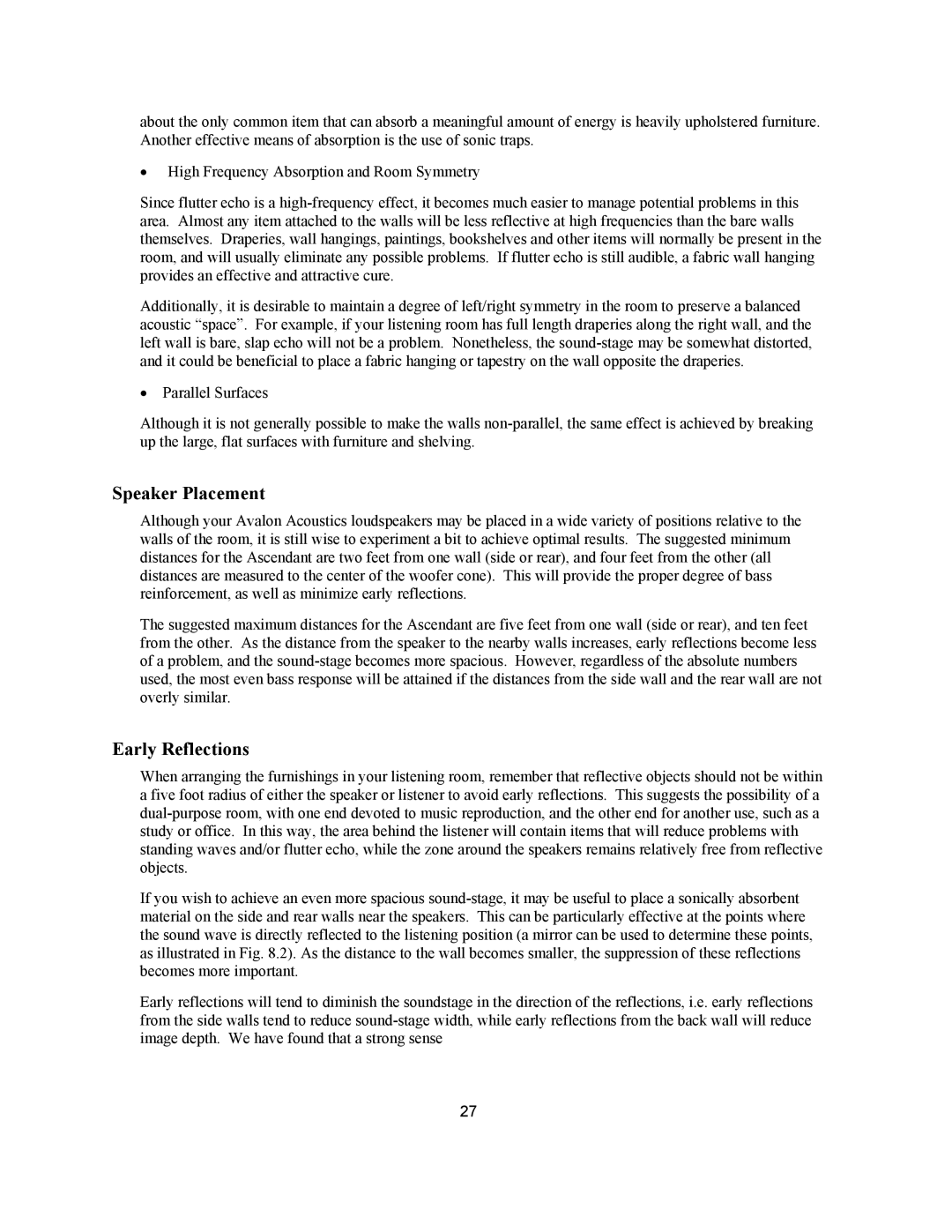about the only common item that can absorb a meaningful amount of energy is heavily upholstered furniture. Another effective means of absorption is the use of sonic traps.
•High Frequency Absorption and Room Symmetry
Since flutter echo is a
Additionally, it is desirable to maintain a degree of left/right symmetry in the room to preserve a balanced acoustic “space”. For example, if your listening room has full length draperies along the right wall, and the left wall is bare, slap echo will not be a problem. Nonetheless, the
•Parallel Surfaces
Although it is not generally possible to make the walls
Speaker Placement
Although your Avalon Acoustics loudspeakers may be placed in a wide variety of positions relative to the walls of the room, it is still wise to experiment a bit to achieve optimal results. The suggested minimum distances for the Ascendant are two feet from one wall (side or rear), and four feet from the other (all distances are measured to the center of the woofer cone). This will provide the proper degree of bass reinforcement, as well as minimize early reflections.
The suggested maximum distances for the Ascendant are five feet from one wall (side or rear), and ten feet from the other. As the distance from the speaker to the nearby walls increases, early reflections become less of a problem, and the
Early Reflections
When arranging the furnishings in your listening room, remember that reflective objects should not be within a five foot radius of either the speaker or listener to avoid early reflections. This suggests the possibility of a
If you wish to achieve an even more spacious
Early reflections will tend to diminish the soundstage in the direction of the reflections, i.e. early reflections from the side walls tend to reduce
27
